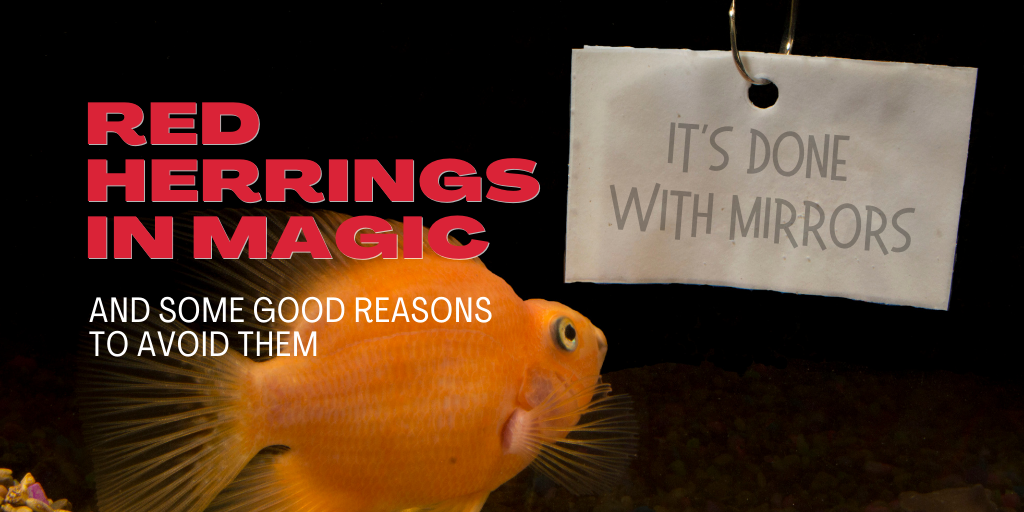
Red Herrings in Magic – Some Good Reasons to Avoid Them
Recently, I received an email from a Fool Us performer who had tried to explain to his friends and family why the show frowned on “red herrings.” I think I can explain this in a way both laymen and magicians will understand.
When a magician uses a red herring, he or she is offering the spectators a possible method for the trick. However, the red herring is not the actual method. The best way to convey this idea is to watch a classic red-herring trick, the Hippity-hop Rabbits.
The red herring (false method) is the rabbits have the opposite color on their backs (white/black, black/white). The spectators think this is the method. At the end, when the rabbits are shown to have completely different colors on their backs, the red herring is destroyed (it could not be the method) and the spectators are fooled. This type of trick (the spectators think one method is going on, but are proved incorrect at the end) is generally called a “sucker” trick. They work well on children because the red herring riles them up.
But a red herring only makes sense if, at the end of the trick, the red herring is proven false.
Suppose if, at the end of the Hippity-hop Rabbits, the magician just put the rabbits away without showing the backs. The spectators would conclude their assumption about the method was correct (because it wasn’t disproved). There would be no mystery; the spectators would be happy with their assumed method.
And this is what’s wrong with introducing red herrings into the tricks on Penn & Teller: Fool Us. The false methods implied by the magician are never disproven. Now Penn & Teller are left trying to guess which of many possible methods the correct one is, and this is not how the Fool Us game is played. If you want to fool P&T, at the end of the trick they should be thinking, “We have no idea how that trick works,” not “From what we saw he could have done it three different ways. I guess we’ll pick the second way.”
But there is something bigger here. If P&T have been presented with five equally plausible methods, and none of them have been disproven by the end of the trick, then the audience has also been left with those same five methods. If an intelligent audience member wants to analyze the trick, they can pick whichever of the five methods they can deduce, and be perfectly happy saying they figured it out, even if it wasn’t actually the method used. This makes for terrible television, and an uninteresting and ineffective magic performance.
Johnny Thompson had a phrase he used all the time to explain this situation: “Magicians need to close all the doors.” Instead of leaving the door open for spectators to choose one of several plausible methods, the magician needs to cancel out all possible methods. (For more on this, read Juan Tamariz’s article on “The Theory of False Solutions.”)
The reason more magicians don’t go the “door-closing” route is because it is far more difficult. But this is the route that leads to astonishing magic. It is also the route that leads to Fool Us trophies.
Heading
+29.000 people love our product

Comments
Leave a comment